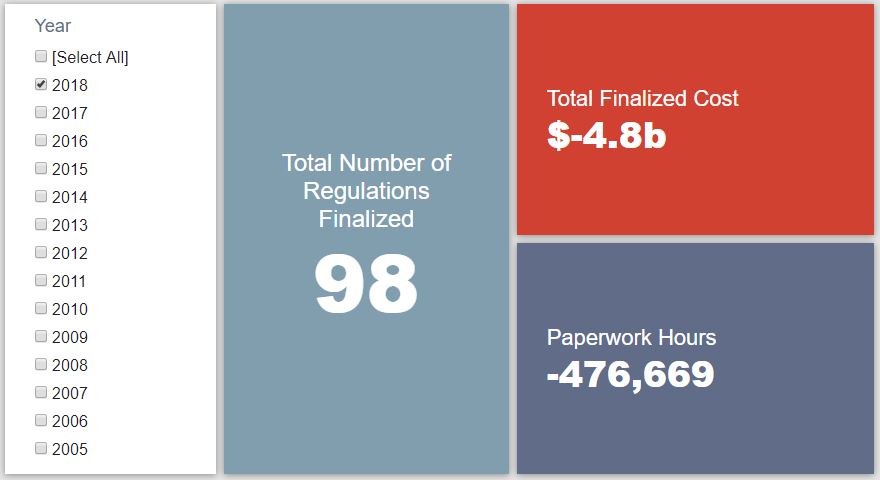Week in Regulation
May 21, 2018
USDA Hogs the Deregulatory Glory
A Department of Agriculture (USDA) proposed rule on “Eliminating Unnecessary Requirements for Hog Carcass Cleaning” dominated an otherwise ho-hum week. Outside of that proposal, no other rulemaking had estimated costs or savings in excess of $4 million. Between both proposed and final rules, agencies published roughly $75.3 million in net cost savings and 21,674 hours of new paperwork. The per capita regulatory burden for 2018 is negative $14.55.
Regulatory Toplines
- New Proposed Rules: 44
- New Final Rules: 62
- 2018 Total Pages of Regulation: 23,128
- 2018 Final Rules: -$4.8 Billion
- 2018 Proposed Rules: $9.1 Billion
Tracking Regulatory Modernization
The USDA Hog Carcass Cleaning proposal was the most significant deregulatory action of the week. The proposed rule would eliminate regulatory language “requiring the cleaning of hog carcasses before any incision is made preceding evisceration.” USDA estimates that this would make the inspection process more efficient for affected producers, saving $11.8 million annually (roughly $83 million in present value over 10 years). However, since it is only a proposed rule, its savings do not yet contribute to the Executive Order (EO) 13,771 regulatory budget for Fiscal Year (FY) 2018.
There was one other action that produced official savings for this year’s EO 13,771 budget. The Department of Justice (DOJ) rule makes various amendments to certain definitions and designations under the Public Safety Officers’ Benefits program. While most of the rule’s impact will be on the transfer payment side, DOJ estimates that new efficiencies in the claims process could save claimants “approximately $24,723 per year.”
According to AAF analysis, since the start of FY 2018 (beginning Oct. 1, 2017), executive agencies have promulgated 37 deregulatory actions with quantified cost savings against five regulatory measures that impose costs, under the rubric created by EO 13,771 and the administration’s subsequent guidance document on the matter. These rules combine for net annual savings of roughly $1.2 billion. This means that agencies have thus far surpassed the administration’s cumulative goal for FY 2018 of $687 million in net annual savings.
Click here to view AAF’s examination of the administration’s progress under the “one-in, two-out” executive order through the end of Fiscal Year 2017.
State of Major Obama-Era Initiatives
Based on total lifetime costs of the regulations, the Affordable Care Act has imposed costs of $52.9 billion in final state and private-sector burdens and 176.9 million annual paperwork hours.
Since passage, the Dodd-Frank financial reform legislation has produced more than 82.9 million final paperwork burden hours and imposed $38.9 billion in direct compliance costs.
Total Burdens
Since January 1, the federal government has published $4.3 billion in net costs (despite $4.8 billion in net savings from final rules) and new paperwork burdens amounting to 2.9 million hours (however, this includes 476,669 hours cut under final rules). Click here for the latest Reg Rodeo findings.











